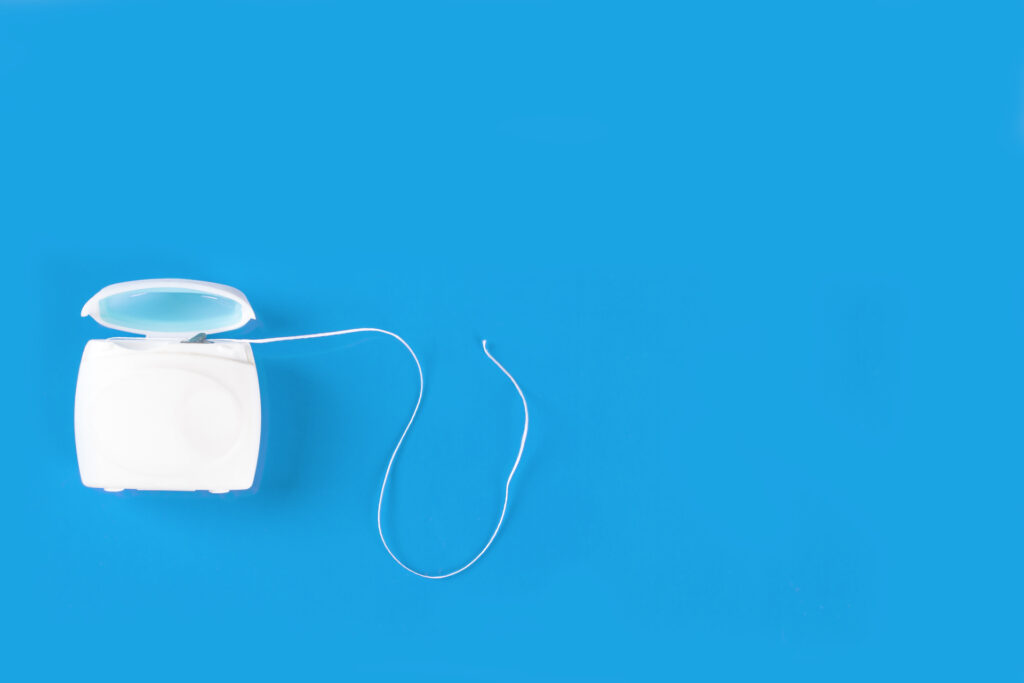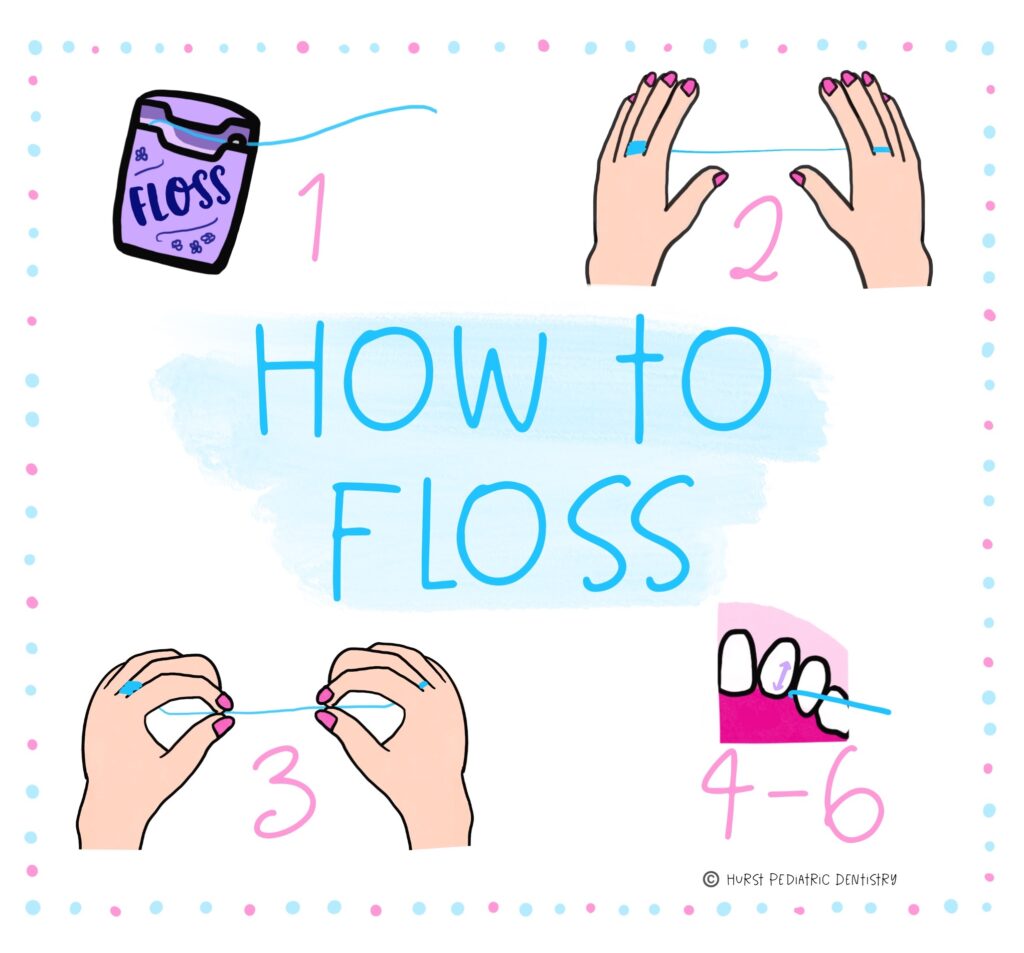A Guide to Flossing Children’s Teeth

Imagine washing a reusable straw coated in smoothie. Would you scrub the outside but then put the straw away in the cabinet without bothering to clean the inside? Of course you wouldn’t. If you did, bacteria would grow and your straw would get pretty gross.
Now think about your child’s teeth. Would you brush your child’s teeth with a toothbrush, but then not bother to floss the parts of your child’s teeth that a toothbrush can’t reach? If you did, then, just like the inside of that straw, the areas between your child’s teeth could accumulate bacteria and get pretty gross. As described below, beyond being gross, this buildup of bacteria could lead to serious infections.
Unfortunately, many Americans dread flossing. If you ever find yourself dreading flossing your child’s teeth and wondering if it’s okay to just skip the whole affair, think about that dirty straw with rotting fruit smoothie inside it. Think about how much you (and your child) will dread dealing with the tooth decay and/or gum disease that could result from not flossing. Then follow our advice for how to properly floss your child’s teeth.
Why Is Flossing Children’s Teeth Important?
As your child eats throughout the day, plaque accumulates on his or her teeth. Plaque is a sticky coating of bacteria that naturally forms on all the surfaces of our teeth. If plaque is not removed regularly, the bacteria it contains can lead to tooth decay and gum disease.
Brushing your child’s teeth twice a day is an essential part of removing plaque from your child’s teeth, but it is not sufficient. Once your child’s teeth are touching, your child’s toothbrush cannot properly clean the surfaces in between the teeth. This is why daily flossing needs to be a part of your child’s oral healthcare routine. Floss removes plaque from the surfaces between your child’s teeth, helping to prevent the buildup of bacteria that can lead to cavities, gum disease and other serious infections.
When Should You Start Flossing Children’s Teeth?
Once your child has two teeth that are touching, a toothbrush alone is no longer sufficient to clean your child’s teeth. You should begin flossing your toddler’s teeth on a daily basis as soon as two teeth are touching.
Continue helping your child floss until your child is able to floss thoroughly on his or her own. As a general rule of thumb, if your child is not able to tie his or her own shoelaces, your child does not yet have the manual dexterity needed to properly floss his or her teeth.
What Is The Best Way to Floss Children’s Teeth?
Do you know how to floss your child’s teeth properly? Many parents do not. Follow the below steps to help remove as much plaque as possible while avoiding injury to your child’s gums.
1) Tear off about 18 inches of floss.
2) Wind most of the floss around the tip of one of your middle fingers (the “clean middle finger”). Now wind a little bit around the other middle finger (the “dirty middle finger”), leaving approximately two inches of unwound floss between your two fingers.
Tip: The idea behind having a “clean middle finger” and a “dirty middle finger” is to avoid rubbing bacteria that you just cleaned off of one of your child’s teeth onto another tooth. After flossing each of your child’s teeth, you will wind dirty floss around the dirty middle finger and unwind clean floss from the clean middle finger before moving on to the next tooth.
Tip: A common flossing mistake is to wind the floss around your index fingers instead of your middle fingers. You will need your index fingers for tightly grasping the floss in the next step.
3) Hold the unwound floss tightly between your index fingers and thumbs.
4) Guide the floss between your child’s teeth using a gentle rubbing motion.
5) When the floss reaches the gum line, curve it into a “C” shape so that it hugs one of your child’s teeth.
6) Holding the floss tightly against the tooth, gently rub the floss up and down.
Tip: Always take care to be gentle when flossing near your child’s gums. The gum area is delicate, and pushing the floss into your child’s gums with force can damage the gums.
7) Repeat steps 4 through 6 until you have cleaned between all teeth that are touching.
Tip: Before moving on to a new tooth, wind the part of the floss that you just rubbed against the previous tooth around the dirty middle finger, and unwind an equal amount of floss from the clean middle finger.

Tips for Flossing Toddlers’ Teeth
Flossing toddlers’ teeth is extremely important for maintaining good oral hygiene, but when your toddler isn’t thrilled about the idea of flossing, it can be a challenge. Try making flossing more exciting by following the below suggestions.
- Let your toddler pick out floss in a flavor he or she likes. You can find floss in all sorts of fun flavors, from GUM Crayola’s grape or watermelon flavors to Cocofloss’s fresh coconut or chocolate flavors.
- Consider using pre-threaded floss picks with fun colored handles. Your toddler might enjoy getting to hold a floss pick while you use another to floss your child’s teeth. Keep in mind that you should be the one flossing your toddler’s teeth. Toddlers do not have the manual dexterity required to floss properly on their own, even with easy-to-grip floss picks.
- Have an older sibling model flossing (or allowing you to floss). Toddlers often feel more excited about, or at least accepting of, oral hygiene practices when they see their friends or older siblings engaging in them.
Is It Better to Floss Your Child’s Teeth Before or After Brushing?
One recent study suggests that flossing your child’s teeth before brushing may be ideal. In the study, researchers found that participants’ mouths contained less plaque and higher levels of fluoride (a mineral that helps prevent tooth decay) when they flossed immediately before brushing with fluoride toothpaste than when they brushed with fluoride toothpaste before flossing.
However, this is just one study. According to the American Dental Association, the order of brushing and flossing is not important.
Try flossing your child’s teeth before brushing them. If this presents any issues, know that it is okay to reverse the order. What matters most is that your child thoroughly brushes and flosses every day.
Should You Floss Your Child’s Teeth in the Morning or Evening?
The best time to floss your child’s teeth is the time that works well with your child’s and your schedule. If mornings are hectic for your family, flossing your child’s teeth before bed may be the best option. If your toddler becomes tired and uncooperative shortly before bedtime, you may want to try flossing your toddler’s teeth in the morning or afternoon instead.
The most important thing is to establish a routine and ensure that your child’s teeth get flossed every day. Find a time that works for you and your child, and then stick to it.
Pediatric Dental Exams and Cleanings in Hurst, TX
Still have questions? Call us at (817) 510-6400 or request an appointment for a pediatric dental exam and cleaning for your child. At your child’s appointment, Dr. Lin can discuss and demonstrate proper flossing technique and remove any plaque that may have accumulated between your child’s teeth.
Hurst Pediatric Dentistry is located in Hurst, TX, and provides pediatric dental exams and cleanings to children from Hurst, Euless, Bedford, North Richland Hills, Keller, Colleyville, Southlake, Watauga, Fort Worth, Irving and the surrounding area.
This article is intended to provide general information about oral health topics. It should not be used to diagnose or treat any medical condition or as a substitute for the advice of a healthcare professional who is fully aware of and familiar with the specifics of your case. Always seek the advice of your dentist or other qualified healthcare provider with regard to any questions you may have relating to a medical condition or treatment.
MEDICALLY REVIEWED BY:
Dr. Jin Lin

Dr. Jin Lin is a board-certified pediatric dentist with a passion for helping children achieve healthier, more beautiful smiles. He earned his Bachelor of Science degree from Cornell University and his Doctor of Dental Medicine (D.M.D.) degree from the Harvard School of Dental Medicine. After graduating cum laude from dental school, he completed his post-doctoral pediatric dentistry training at Boston Children’s Hospital and the Harvard School of Dental Medicine, where he served as chief resident and worked with children with a wide variety of special medical and dental needs, including children with rare syndromes.

